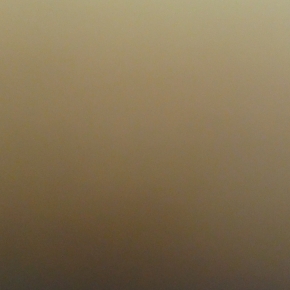
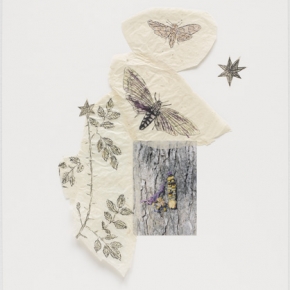
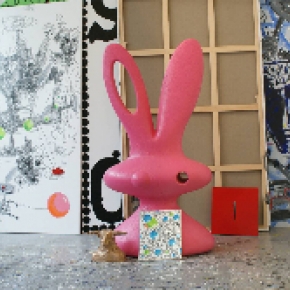
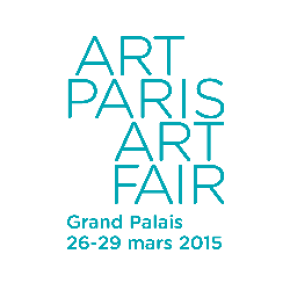
Tous les matins du monde.
Après huit années de voyages aux quatre coins du monde, au coeur d’une nature encore originelle, le photographe brésilien clame, en 245 photographies, son désir d’une terre à sauver.
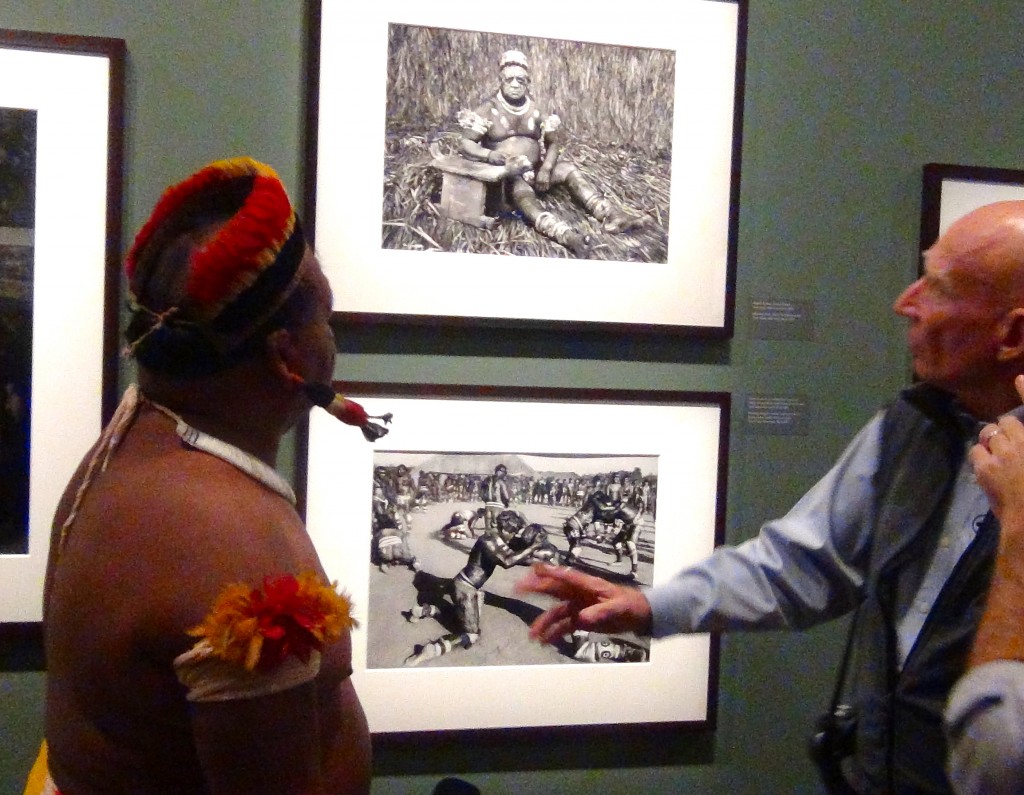 Des images presque trop belles, trop esthétiques, trop ethnologiques. Trop ambitieux ? Trop star system, Salgado ? On se souvient de Susan Sontag s’interrogeant sur «l’inauthenticité du beau» dans l’oeuvre de Sebastiao Salgado au début des années 2000. Les questions se posent et s’oublient vite dans l’exposition Genesis. Car comment ne pas se laisser séduire par les «tableaux» de celui qui est considéré par The Sunday Times comme «le plus grand photojournaliste du monde» ? Comment ne pas être conquis par une telle célébration d’un premier matin du monde ? Comment ne pas être fasciné par le discours sensationnel du photographe qui raconte avec tant de passion ses aventures, ses rencontres, ses chocs. Il a tout vu. Tout fait. Mise en danger permanente. Pour réussir ce projet Genesis qu’il dévoile à la Maison européenne de la photographie aux côtés de son épouse, il a pris 8 ans, traversé 26 pays, a marché 850 km en Ethiopie, a sauté juste à la bonne seconde de son bateau pour s’accrocher aux glaciers de l’Antarctique et ne pas tomber dans la mer gelée. Il a eu trop chaud. Trop froid. Peu importe ! Entraîné par un guide de haute montagne devenu son compagnon de route, Jacques Barthélémy, il s’est préparé deux ans à ce voyage et sait, à 70 ans, que l’âge ne compte pas. Seul le but importe. Son désir ? Transmettre la magie d’une terre et de peuples inconnus encore préservés. Originels. S’en imprégner, s’y immerger. S’y perdre. Ses plus beaux souvenirs ? Les plus grandes baleines du monde, race quasiment éteinte, dont l’une d’entre elles est devenue «une copine» dit-il, et «venait à nous pour que nous la caressions». La «scène fantastique» du chef de tribu Afukaka, présent à Paris pour l’exposition et à ses côtés, torse nu, jean et coiffe de plumes jaunes et rouges, venant «les accueillir nu sur sa moto» ! Les cérémonies féminines rituelles d’Amazonie dont il parle avec émotion en montrant la photographie d’une jeune fille les jambes liées. «Passer au milieu des pingouins comme un autre pingouin, au milieu des éléphants de mer comme un autre éléphant de mer. On était vu comme un autre animal du royaume animal», poursuit-il en faisant de grands gestes.
Des images presque trop belles, trop esthétiques, trop ethnologiques. Trop ambitieux ? Trop star system, Salgado ? On se souvient de Susan Sontag s’interrogeant sur «l’inauthenticité du beau» dans l’oeuvre de Sebastiao Salgado au début des années 2000. Les questions se posent et s’oublient vite dans l’exposition Genesis. Car comment ne pas se laisser séduire par les «tableaux» de celui qui est considéré par The Sunday Times comme «le plus grand photojournaliste du monde» ? Comment ne pas être conquis par une telle célébration d’un premier matin du monde ? Comment ne pas être fasciné par le discours sensationnel du photographe qui raconte avec tant de passion ses aventures, ses rencontres, ses chocs. Il a tout vu. Tout fait. Mise en danger permanente. Pour réussir ce projet Genesis qu’il dévoile à la Maison européenne de la photographie aux côtés de son épouse, il a pris 8 ans, traversé 26 pays, a marché 850 km en Ethiopie, a sauté juste à la bonne seconde de son bateau pour s’accrocher aux glaciers de l’Antarctique et ne pas tomber dans la mer gelée. Il a eu trop chaud. Trop froid. Peu importe ! Entraîné par un guide de haute montagne devenu son compagnon de route, Jacques Barthélémy, il s’est préparé deux ans à ce voyage et sait, à 70 ans, que l’âge ne compte pas. Seul le but importe. Son désir ? Transmettre la magie d’une terre et de peuples inconnus encore préservés. Originels. S’en imprégner, s’y immerger. S’y perdre. Ses plus beaux souvenirs ? Les plus grandes baleines du monde, race quasiment éteinte, dont l’une d’entre elles est devenue «une copine» dit-il, et «venait à nous pour que nous la caressions». La «scène fantastique» du chef de tribu Afukaka, présent à Paris pour l’exposition et à ses côtés, torse nu, jean et coiffe de plumes jaunes et rouges, venant «les accueillir nu sur sa moto» ! Les cérémonies féminines rituelles d’Amazonie dont il parle avec émotion en montrant la photographie d’une jeune fille les jambes liées. «Passer au milieu des pingouins comme un autre pingouin, au milieu des éléphants de mer comme un autre éléphant de mer. On était vu comme un autre animal du royaume animal», poursuit-il en faisant de grands gestes.
Ce brésilien d’origine à la fois portugaise, suisse et indienne, docteur en économie agricole, fuit la dictature brésilienne en 1969 pour trouver asile en France et lâche en 1973 sa carrière londonienne pour se consacrer à la photographie en total autodidacte. Très vite intégré dans les agences Sygma, Gamma et Magnum, affublé de nombreux prix, il se rend célèbre par ses portraits de la misère humaine, entre autre avec «Exodes». Secoué, dérouté par trop de regards perdus, avec Genesis, le voilà qui se lave d’un trop plein d’inhumanité et devient paysagiste. Un paysagiste qui ballade l’oeil du visiteur entre le romantisme de l'”Ile aux morts” d’un Böecklin, le primitivisme d’un Gauguin et l’abstraction des encres d’un Michaux au geste sage. Comment dans de telle conditions physiques, pris par les vents, ravagés par les conditions climatiques rapporter des images si parfaites ? L’oeil s’abreuve de la splendeur des régions polaires, des forêts tropicales, des savanes, des déserts torrides, de montagnes dominées par les glaciers dans des compositions quasi abstraites toujours en noir et blanc. «Je ne sais pas faire la couleur, dit Salgado. La gamme de gris me permet de me concentrer sur mon attitude photographique. J’adore raconter des histoires avec la photographie. Je ne pouvais pas raconter mes histoires avec la couleur. Mon langage est le noir et blanc et on a aujourd’hui, avec Genesis, un échantillon de planète en noir et blanc». Et le voilà qui raconte encore tout en détail comment il a franchi le numérique en gardant grâce à l’ingéniosité de son équipe, le travail avec les planches-contacts et les tirages papier, s’enchantant de la désormais légèreté de son matériel.
La passion Salgado est contagieuse. «46% de la terre est encore intouchée par l’homme». En regardant les manchots des Iles Sandwich du Sud, les grandes dunes du Sud de Djanet en Algérie, les indiens waura de l’Etat du Mato Grosso au Brésil, on comprend la volonté du photographe de sauver cette planète dont il clame la beauté dans le monde entier. Il contribue encore personnellement dans son engagement envers le développement durable en créant avec sa femme Lélia, depuis les années 1990, l’Instituto Terra. Ainsi, sur la terre de son enfance, il a déjà planté 2 millions d’arbres pour atteindre les 50 millions en 2050. Son projet Genesis porté par l’Unesco poursuit sa quête presque trop idéaliste d’un univers originel. Il rappelle un autre début de siècle, le XXème, où les peintres croyaient eux aussi en une autre vision du monde… La recherche du paradis perdu.
Traduction en chinois
唯美, 洋溢着普世关怀与大爱。观赏著名的巴西摄影师Sebastiao Salgado的作品,冲击您的何止是视觉,还有灵魂的震撼。
新闻摄影师, 艺术家 Sebastiao用镜头如实记录,真实诠释着人类,动物,世界--用他唯美的艺术风格。 怀着对普世的关怀,抱着记录世界的雄心,39年来他揣着大无畏的,战地记者似的奉献精神,带着他的相机走访了超过120个国家。其拍摄的作品被视为21世纪最重要的纪实项目。年复一年Sebastiao 从未停止过对全球性社会问题的关注。拉美,非洲,欧洲及亚洲都留下了艺术家的足迹。而今,年逾七十的艺术家仍然马不停蹄,孜孜以求的为了艺术四处奔波。
这个兼有巴西,葡萄牙,瑞士和印度血统的农业经济学家,1969年逃离了受独裁统治的巴西,来到法国, 从此过上了‘ 他乡作故乡’的生活。 1971年身为经济学家的Sebastiao到伦敦为国际咖啡组织和世界银行效力。期间,因公务而一次次的到非洲 ,而就是在非洲,他开始迷上摄影。不久,他惊觉自己对于摄影的热情远甚于对经济学的热情, 于是,1973年,他辞去经济学家的工作举家回到巴黎,华丽转身为专职摄影家直至被’星期日泰晤士报’评为’全球最杰出的新闻摄影家’。
起初,他作为自由摄影家拍了不少令人印象深刻的作品,不久,他进入Sygma 图片社,75年,他又加入了Gamma图片社。在Gamma的时间里,他拍摄了许多有关非洲,拉美,及欧洲社群的主题图片。79年,他离开了Gamma,加入了Magnum 。在Magnum 的时间里,他仍然游历世界拍摄照片。84年,他的第一本影集 « Other Americas » 出版。也是在这一年直到86年,他开始与 ‘医生无国界’组织合作,拍摄非洲的饥荒。之后他出版了两本关于这个拍摄系列的影集。此后经年,他去了66个国家,拍摄在大工业背景下的普通工人及进入城市的农民工的生存状态。之后,他出版了分别名为 « Migration »与 « Portraits of Children of the Migration »两本书。 94年,他离开了Magnum,与其妻一起开办了Amazonas图片社。这个可能是世界上最下的图片社。
怀抱着改变世界的理想与目的,艺术家的作品风格带有新闻摄影特质,图片总是黑白二色,对比强烈, 锐利,极强的视觉冲击力,让观者不能自已的被吸引,被震撼,然后久久的把这些图片,图片里形形色色的人群以及图片里诉说的故事留在心里。
最近这些年,Salgado关注的焦点是人类社会活动对环境,地球的影响。千山万水的,他去到南极与北极, 在那儿,他与企鹅交上了朋友。当然,图片的主角们,也开始由山川,地貌与动物扮演……
大地之子,地球公民,人类的艺术家Sebastiao Salgado已是古稀之年,可他依然五湖四海的穿梭,为弱势群体请命,为地球疾呼 --爱护地球我们的家园,关爱我们的同类及所有的动物!Nancy Chiarelli .何璀璨.
Traduction en anglais
Too aesthetic almost too beautiful pictures, too ethnological. Too ambitious? Too star system, Salgado? We remember Susan Sontag questioning “inauthenticity of beauty” in the work of Sebastiao Salgado in the early 2000s. Issues arise and are quickly forgotten in the exhibition Genesis. For how not to be seduced by the “tables” of what is considered by The Sunday Times as “the greatest photojournalist of the world”? How not to be conquered by such a celebration of the first morning of the world? How not to be fascinated by the sensational speech photographer who so passionately tells his adventures, his encounters, shocks. He saw everything. Everything. Getting permanent danger. To succeed in this project Genesis reveals that the European House of Photography alongside his wife, he took 8 years, through 26 countries, walked 850 km in Ethiopia, jumped at just the right second to his boat cling to the glaciers of Antarctica and not fall into the frozen sea. It was too hot. Too cold. Whatever! Driven by a mountain guide became his companion, Jacques Barthélémy, he prepared two years and knows this trip, 70 years, that age does not matter. Sole purpose is important. His desire? Convey the magic of a land still preserved and unknown peoples. Original. Immerse themselves in, immerse themselves. Get lost. His fondest memories? The largest whales in the world, almost extinct race, one of them has become a “girlfriend” he said, and “came to us so that we caressed.” The “fantasy scene” of tribal chief Afukaka present in Paris for the exhibition and at his side, shirtless, jeans and cap red and yellow feathers, from “welcome naked on his motorcycle!” Female ritual ceremonies Amazon which he speaks with emotion showing a photograph of a girl legs tied. “Skip the middle penguins as another penguin in the midst of elephant seals as another elephant sea It was seen as another animal in the animal kingdom,” he continues, gesturing.
This Brazilian origin both Portuguese, Swiss and Indian Doctor in Agricultural Economics, fled the Brazilian dictatorship in 1969 to seek asylum in France in 1973 and loose his London career to devote himself to photography as an autodidact total. Quickly integrated into Sygma, Gamma and Magnum agencies, wearing many awards, he became known for his portraits of human misery, among other with “Exodus.” Shaken, confused by too much looking lost with Genesis, here he washes an overflow of inhumanity and becomes landscape. A landscaper who walk the visitor’s eye between the romanticism of the “Island of the Dead” a boecklin, primitivism of Gauguin and abstraction inks Michaux a wise gesture. How in such physical conditions taken by the winds, ravaged by the weather report image so perfect? The eye watered the splendor of the polar regions, tropical forests, savannas, deserts scorching, mountains dominated by glaciers almost always in black and white abstract compositions. “I do not know how the color, Salgado said. Grayscale allows me to focus on my photographic attitude. I love telling stories with photography. I could not tell my stories with color. My language is black and white and today, with Genesis, a sample of world in black and white. ” And yet here he tells everything in detail how he crossed the digital keeping thanks to the ingenuity of his team, working with contact sheets and prints, now delighting the lightness of his equipment.
Salgado passion is contagious. “46% of the land is still untouched by man.” Watching the penguins South Sandwich Islands, the big dunes of southern Algeria Djanet, waura Indian state of Mato Grosso in Brazil, we understand the desire of the photographer to save this planet which he proclaims the beauty in the world. It helps even personally in its commitment to sustainable development by creating with his wife Lelia, since the 1990s, the Instituto Terra. Thus, the land of his childhood, he has already planted two million trees to reach 50 million by 2050. Its Genesis project supported by UNESCO continues its almost too idealistic quest of an original universe. He recalls another turn of the century, the twentieth, where painters also believed in another world view … The search for the lost paradise.
“Sebastiao Salgado, Genesis”, Maison européenne de la photographie, 5/7, rue de Fourcy, 75004 Paris. Du 25/09 au 05/01/14.
(Vues de l’exposition Salgado, Genesis, en bas photographies de Sebastiao Salgado et du chef de tribu Afukaka, images ouvretesyeux)